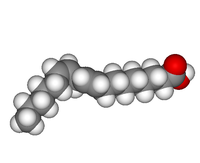
Photo from wikipedia
Volatile fatty acid (VFA) production, utilization of soluble organic compounds, and associated microbial consortia were investigated after different pretreatments (untreated, alkaline, and thermal-alkaline) using cyanobacterial biomass as a substrate. Compared… Click to show full abstract
Volatile fatty acid (VFA) production, utilization of soluble organic compounds, and associated microbial consortia were investigated after different pretreatments (untreated, alkaline, and thermal-alkaline) using cyanobacterial biomass as a substrate. Compared to the untreated control, soluble carbohydrate concentrations were almost the same after alkaline and thermal-alkaline pretreatments, but soluble protein concentration was 1.58 times higher after alkaline pretreatment and 1.81 times higher after thermal-alkaline pretreatment. However, the highest degree of acidification was obtained after alkaline pretreatment (55.36 ± 3.00%). Microbial communities in the untreated control differed only slightly from those after thermal-alkaline pretreatment, but were clearly distinct from those after alkaline pretreatment. After alkaline pretreatment, protein-utilizing bacteria became relatively predominant. These results revealed the relationships between efficiency of VFA production and the shift in microbial community.
Journal Title: Chemosphere
Year Published: 2018
Link to full text (if available)
Share on Social Media: Sign Up to like & get
recommendations!